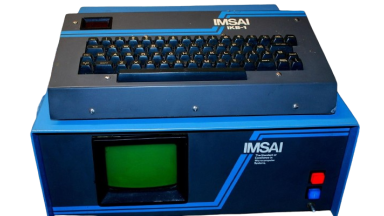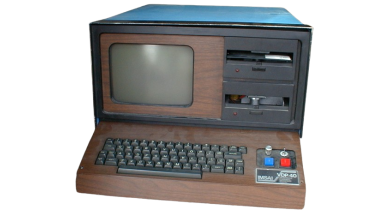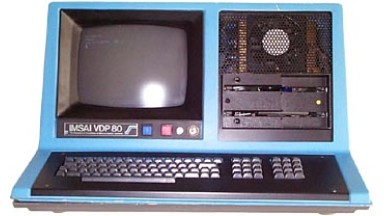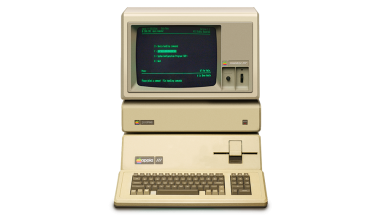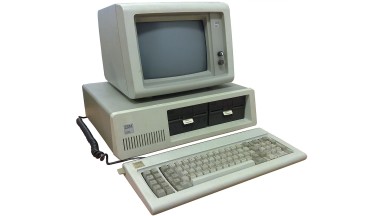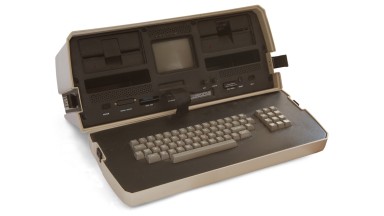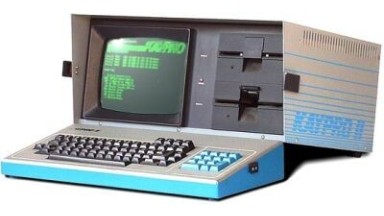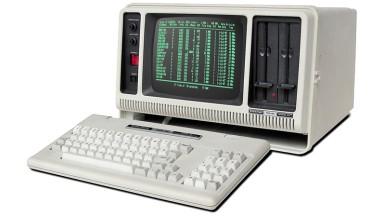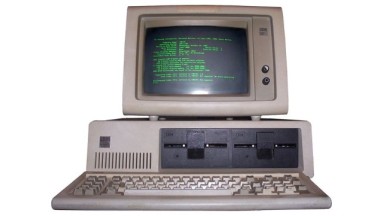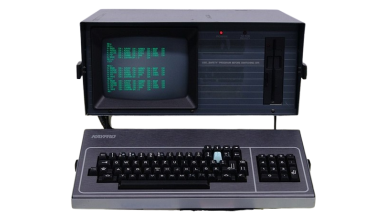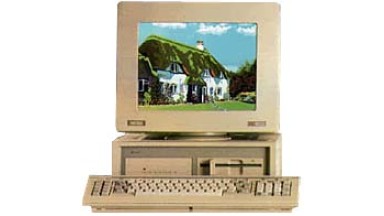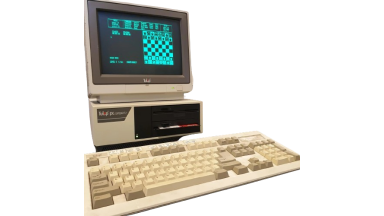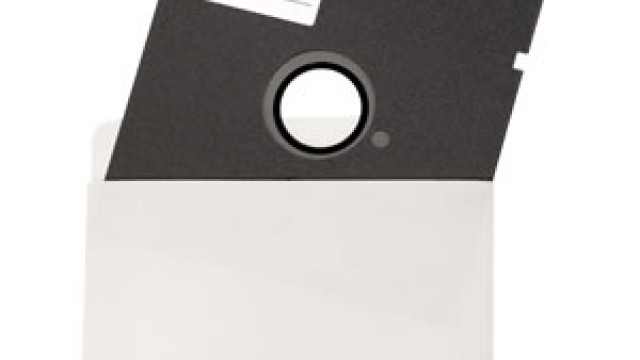
Diskette 5¼"
Developed by: Alan Shugart
Company: Shugart Associates
Launched: 1976
Capacity: 110 KiB
Alan Shugart developed this diskette to reduce the size of the large 8" floppy disks.
They proved to be cheaper and were quickly incorporated into computers with CP/M.
This first version had 35 tracks.
Personal computers equipped width Diskette 5¼"
Manufacturer: IMSAI
Launches: 1977
Manufactured in IS
CPU:
Intel 8080
@ 3MHz
Memory: 32 KB
Support: Diskette 5¼"
Support B: Diskette 5¼"
Hard drive:
Operating system: CP/M
The PCS 80 came with a host of peripherals: line and character printers, CRT terminals, smart keyboards, 8" and 5.25" floppy disk storage.
Manufacturer: IMSAI
Launches: 1977
Manufactured in IS
CPU:
Intel 8085
@ 3MHz
Memory: 32 KB
Support: Diskette 5¼"
Support B: Diskette 5¼"
Hard drive:
Operating system: CP/M
This evolution of the IMSAI 8080 had two 80/160KiB floppy disk drives built in, retained the S-100 bus, and had a built-in CRT monitor.
Manufacturer: IMSAI
Launches: 1977
Manufactured in IS
CPU:
Intel 8085
@ 3MHz
Memory: 32 KB
Support: Diskette 5¼"
Support B: Diskette 5¼"
Hard drive:
Operating system: CP/M
This was the evolution of the IMSAI VDP40.
Manufacturer: Apple
Launches: 1980
Manufactured in US
CPU:
Synertek 6502
@ 2MHz
Memory: 128 KB ~ 512 KB
Support: Diskette 5¼"
Hard drive:
None
Operating system: Apple SOS
The Apple computer that wanted to take over the office market.
Manufacturer: IBM
Launches: 1981
Manufactured in US
CPU:
Intel 8088
@ 4.77MHz
Memory: 16 KB ~ 640 KB
Support: Diskette 5¼"
Hard drive:
None
Operating system: PC DOS
Manufacturer: Osborne
Launches: 1981
Manufactured in US
CPU:
Z80
@ 4MHz
Memory: 64 KB
Support: Diskette 5¼"
Support B: Diskette 5¼"
Hard drive:
None
Operating system: CP/M 2.2
The Osborne 1 was the first commercially successful portable microcomputer.
It weighed 11 kg, cost US$1,795, and ran the then-popular CP/M 2.2 operating system.
Manufacturer: Kaypro
Launches: 1982
Manufactured in US
CPU:
Z80
@ 2.5MHz
Memory: 64 KB
Support: Diskette 5¼"
Support B: Diskette 5¼"
Hard drive:
None
Operating system: CP/M
Despite being the first model to be commercially released, it was called the "Kaypro II" (at a time when one of the most popular microcomputers was the Apple II).
The Kaypro II was designed to be portable like the Osborne, housed in an aluminum case containing all the components and with a handle for carrying.
Manufacturer: Tandy
Launches: 1983
Manufactured in US
CPU:
Zilog Z80
@ 4MHz
Memory: 64 KB ~ 128 KB
Support: Diskette 5¼"
Support B: Diskette 5¼"
Hard drive:
None
Operating system: TRSDOS
The Model 4P is a portable version introduced in September 1983 and discontinued in early 1985. It is functionally identical to the dual-drive desktop model but lacks the card-edge connector for two external floppy drives and the cassette tape interface. It has a slot for an internal modem card and could emulate a Model III.
Manufacturer: IBM
Launches: 1983
CPU:
Intel 8088
@ 4.77MHz
Memory: 128 KB ~ 640 KB
Support: Diskette 5¼"
Hard drive:
Operating system: PC DOS
Manufacturer: Kaypro
Launches: 1983
CPU:
Zilog Z80
Memory: None
Support: Diskette 5¼"
Hard drive:
10 MB
Operating system: CP/M
The Kaypro 10 was one of the first computers to come with a hard drive as a standard component. It came with a 10-megabyte internal hard drive and a single DS/DD floppy disk drive.
Manufacturer: Amstrad
Launches: 1986
Manufactured in GB
CPU:
Intel 8086
@ 8MHz
Memory: 640 KB
Support: Diskette 5¼"
Hard drive:
None
Operating system: MS-DOS 3.2
This was an update to the previous model, the PC1512, which increased the RAM to 640 KB and incorporated EGA graphics.
There was a version with a dual 5.5-inch floppy disk drive or a hard drive (PC1640HD20).
Manufacturer: Tulip
Launches: 1987
Manufactured in NL
CPU:
NEC V20
@ 9MHz
Memory: 640 KB
Support: Diskette 5¼"
Hard drive:
20 MB
Operating system: MS-DOS 3.30
An IBM PC compatible equipped with an NEC V20 microprocessor, which, being a clone of the i8088, surpassed it in performance.
